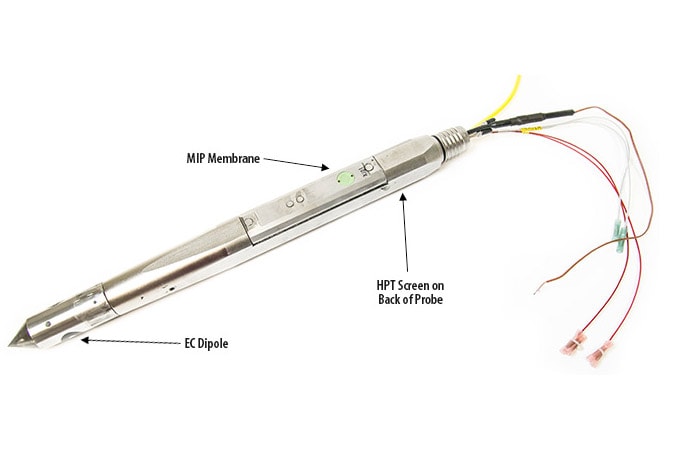Understanding a Membrane Interface Probe (MIP)
The Membrane Interface Probe (MIP) is another powerful tool from GeoProbe’s Direct Imaging toolkit. The MIP allows operators to detect volatile organic compounds (VOCs) within the soil. As the MIP tool is advanced by direct push drilling, a heater block that houses a semipermeable membrane is heated to a set point, typically around 120 degrees centigrade. As the membrane comes into contact with contaminated soil, VOCs will diffuse through the semipermeable membrane and be carried up the probe’s trunkline by an inert carrier gas. The VOCs are then injected into a gas chromatograph (GC) customized for use with this tool. In addition to the information discerned by use with the GC, the MIP probe also contains an electrical conductivity dipole (EC) used as a lithology indicator and a hydraulic profiling port. From the port, about 300 mL of water per minute is injected, and a vertical hydraulic profile of your boring can be logged.

By taking advantage of the newest High-Resolution Site Characterization tools such as the MIP, the OIP, and the Low-Level MIP, we can better define plumes, migratory pathways, hydraulic conductivity, and lithology. With a better understanding, we can make smarter, more efficient, and cheaper remediation decisions!
If you are new to this technology, feel free to contact our office line and we can schedule a short webinar/presentation to further explain the capabilities of the Membrane Interface Probe. In addition, we can also touch base on Eagle Synergistic’s other HRSC subsurface imaging tools including: the Optical Image Profiler (OIP), Hydraulic Profiling Tool (HPT), and Electrical Conductivity dipole (EC).
